Feeling fit at being in shape at 40 may seem like an uphill battle but I can assure you it is a lot easier than you might think. By following a few simple training protocols, you will feel fitter and stronger than you ever have been before. All that is required from you is a positive mindset and consistency.
Before we delve into the benefits behind these sessions and why you should be doing them, let’s start with why you’re really here. You are here for a workout itself so you can get to the gym and try it out!
Take a quick look at the cardiovascular focused workout below, get to the gym and come back later to discover the wonderful benefits you and your body is about to experience, along with a resistance training circuit that will not only increase your muscle mass and strength but your strength endurance as well.
Cardiovascular Training Session – Duration 35 minutes
| Duration (Minutes) | Percentage Effort |
| 5-minute warmup | 30 – 50% |
| Minute 5 to 9 | 65% |
| Minute 9 to 10 | 85% |
| Minute 10 to 14 | 70% |
| Minute 14 to 15 | 90% |
| Minute 15 to 19 | 75% |
| Minute 19 to 20 | 95% |
| Minute 20 to 24 | 80% |
| Minute 24 to 25 | Everything you have left |
| 10-minute cooldown |
Tip: Maintain the above template and switch up the exercise selection to keep things exciting!
The Benefits of Cardiovascular Training
Heart Health: Cardiovascular disease (CVD) is the biggest cause of worldwide deaths. According to the world health organisation, it accounts for 17.9 million deaths per year, which is a staggering 31% of all global deaths. What makes this stat even crazier is the fact that CVD is highly preventable by avoiding several risk factors through the use of exercise such as high blood pressure, high blood sugar and high cholesterol. Of course, there are several unavoidable risk factors such as age, race, gender and family history, but by focusing on the variables we are able to influence we can greatly improve the likelihood of avoiding CVD and living a longer and healthier life.

High Blood Pressure: Also known as hypertension it is one of the most common risk factors associated with CVD. A study by Pescatello et al., 2004 concluded endurance focused endurance exercise prevented the development of hypertension and lowered blood pressure in both adults with or without hypertension. They also found blood pressure was decreased up to 22 hours after the exercise session.
High Cholesterol (Dyslipidaemia): A quantitative analysis by Durstine et al., 2001 found positive effects of regular exercise on blood lipid changes associated with the lowering of cholesterol. Research by Yoshida et al., 2010 also had similar findings, concluding that supervised aerobic training in the presence of weight loss markedly improved participant lipid level, with VLDL-cholesterol levels significantly falling.
High Blood Sugar: Over a prolonged period of time, high blood sugar levels can damage the nerves that control your blood vessels and heart, as well as the blood vessels themselves. Of course, people with diabetes are more susceptible to high blood sugar with research even finding diabetic adults to be twice as likely to die from heart disease.
It is also thought the longer you have diabetes, the higher your chance of heart disease (Huo et al., 2016). Fortunately, there is plenty of evidence to support the blood sugar lowering effect of exercise through improved insulin such as studies by Colberg et al., 2010 and Ivy, 1997.
The research overwhelmingly supports exercise as an excellent way to reduce the risk factors of cardiac disease, with Thompson PD et al., 2003 suggesting exercise can reduce cardiac risk by up to 30%!
Improvement in Mental Health
The benefits of aerobic exercise don’t stop at the physical. Regular exercise can also have a huge positive impact on your mental health. When we exercise we release endorphins. These chemicals interact with brain receptors that can reduce your perception of pain. They are also responsible for causing a positive feeling in the body, with people at the end of a workout often experiencing a ‘euphoric’ feeling.

A review by Teychenne, Ball & Salmon et al., 2008 also found both increased exercise frequency and exercise intensity to be associated with a reduction in participant depression. Results even suggest small doses of exercise can elicit a depression reducing effect.
Recovery at 40 and Beyond
A comprehensive review on the effect of ageing on skeletal muscle recovery by Fell & Williams (2008) concluded ageing skeletal muscle to experience greater exercise-induced fatigue, along with a slower rate of recovery and repair due to this fatigue.
Once we understand that age does play a role in the recovery capabilities of skeletal muscle we can then begin to implement this into our training to ensure consistent results and avoid injuries.
It all comes down to taking a step back and being honest with yourself, realising you can’t push it as much as you used to, however, this doesn’t mean you can’t and shouldn’t train just as hard. A few key changes will have you lifting more and running further than you ever have, here’s how!
Protein Intake: Age-related muscle loss or sarcopenia has been associated with a disruption in the rate of muscle protein synthesis (Koopman & Loon, 1985). Along with a consistent training regimen that involves resistance training movements you must also focus on your protein intake if you want to maximise your recovery.
Unfortunately, ageing muscle is less sensitive to relative protein doses meaning higher quantities of protein are vital for satisfactory levels of protein synthesis and recovery. Older individuals also need to focus on consistent protein distribution throughout the day (Breen & Philips, 2011).
Active Recovery Days: Incorporating recovery strategies such as adding active recovery days is a great way to speed recovery through the week and keep good habits. Active recovery can be as little as going for a 30-minute walk or cycle. Anything that gets you off the sofa for a bit and gets the blood flowing delivering much-needed nutrients to your repairing muscles.
Less is More: Despite the addition of recovery days, sometimes taking a step back will do your body and performance a world of good. Remember the gym isn’t going anywhere and neither is your progress. Sometimes it takes taking a step back to move 2 steps forward.
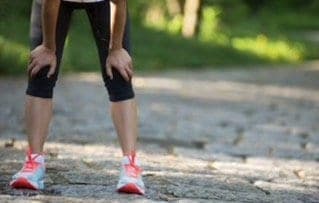
The Importance of Resistance Training
Although cardiovascular health should maintain most of your focus, it is important not to overlook the importance of resistance training! More muscle mass increases our natural metabolic rate (Zurlo et al., 1990) which helps prevent unwanted fat gain, and with our metabolisms slowing down, almost linearly, as we age (Shimokata & Kuzuya, 1993) any boost we can get is a huge plus.
Resistance training is also effective at improving coronary risk factors, with McCartney et al 1985 finding weight training to be an effective method of reducing heart rate and blood pressure during the activity itself. Further benefits include increased joint stability, injury prevention and a more positive body image.
The following session is not your traditional resistance training session focused purely on muscle building or strength. Although you will experience these two benefits, the workout is structured to keep you on the move throughout its duration and is a great way to work on your strength endurance. Take a look!
Resistance Training Circuit
Each exercise is defined by its movement pattern, the actual exercise you perform is up to you depending on preference and equipment (or lack of) at hand.
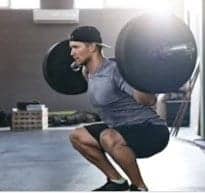
Squat: There are a huge variety of squats out there at your disposal. Popular options include barbell back/front squats, goblet squats, body weight squats and dumbbell squats.
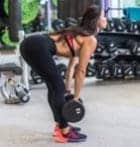
Hip Hinge: Deadlifts with the object of your choice, stiff leg deadlifts or kettlebell swings are your three main choices
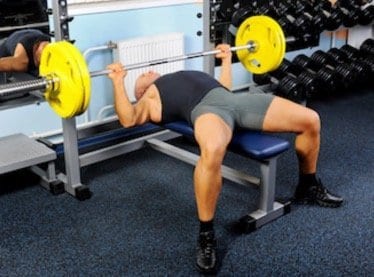
Horizontal Press: Anything from dumbbell, barbell or kettlebell performed on a bench or the floor are good varieties. Push-ups are also a very good and easily accessible option

Horizontal Pull: Dumbbell, barbell, kettlebell or cable rows are the go-to movements for this section.
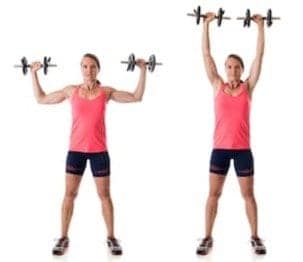
Overhead Press: Dumbbell or barbell press is a good option. For an added challenge why not try handstand push-ups against a wall
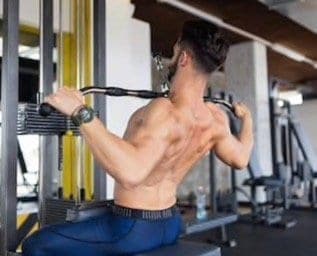
Vertical Pull: Your three main options include a pull-down, pull-up or assistant pull-up
| – Before you start, perform a 5-minute warm up and stretch routine |
| – Minimal rest between exercises, ideally going straight into the next |
| – Perform the complete circuit three times |
| – 10 – 12 reps per exercise |
| – Add weight to some or all exercises once you feel capable |
Don’t forget you can switch up the exercise selection and order I whichever way you see fit. Having a number of sessions to pull from will help keep the process interesting and increase the likelihood you keep coming back for more!
Final Thoughts- Expect The Slump
The hardest part about getting in shape is showing up. Consistency breeds results, and this is something anyone can attain. Work and life schedules can rob us of time, and probably something that’s even more important, motivation.
Once life gets busy, when we have a sick child, sleepless nights and debts start to pile up, the natural thing to do is to revert back to type and stop exercising. Nutrition becomes a comfort, as does eating junk. Your new workout becomes a chore. You slide into the slump….
Exercising is not the pinnacle of creation like Instagram and the magazine and celebrity world wants to make out. But our bodies were built to move. Having more energy and vitality improves our mood and lets us be stronger and more able to cope with life’s issues.
You owe it to yourself , your children and grandchildren not to let the stress of living overpower you and turn you into a sedantary being. That’s when life’s problems can push you into an early grave. Death is an appointment God has made for everyone but you can speed it up with poor lifestyle choices.
Exercise does not have to be complicated. It does not even have to involve a gym, or any equipment. It’s the simplist things that can cause the most benefit and ironically the most harm in your life. Moving is good, sitting is bad. That is excess sitting.
It’s better to do 10 sets of bodyweight air squats a day, and go for a brisk 20 minute walk, than to sit on a chair and complain about problems. No one cares, except those poor sufferring servants who occupy your living quarters.
It’s simple.
Get moving and release those feel good hormones, let them batter your stress hormones.
There is nothing special about most people who stay in shape throughout their entire life. Not much at all. Perhaps they have good genetics, aren’t prone to carrying a lot of fat around the mid section, but that isn’t always so.
They just show up. They most likely aren’t always vegans, nor survive on a diet of avocados and quinoa. They just show up. That’s all it takes.
One day at a time….you’ll get there too.
